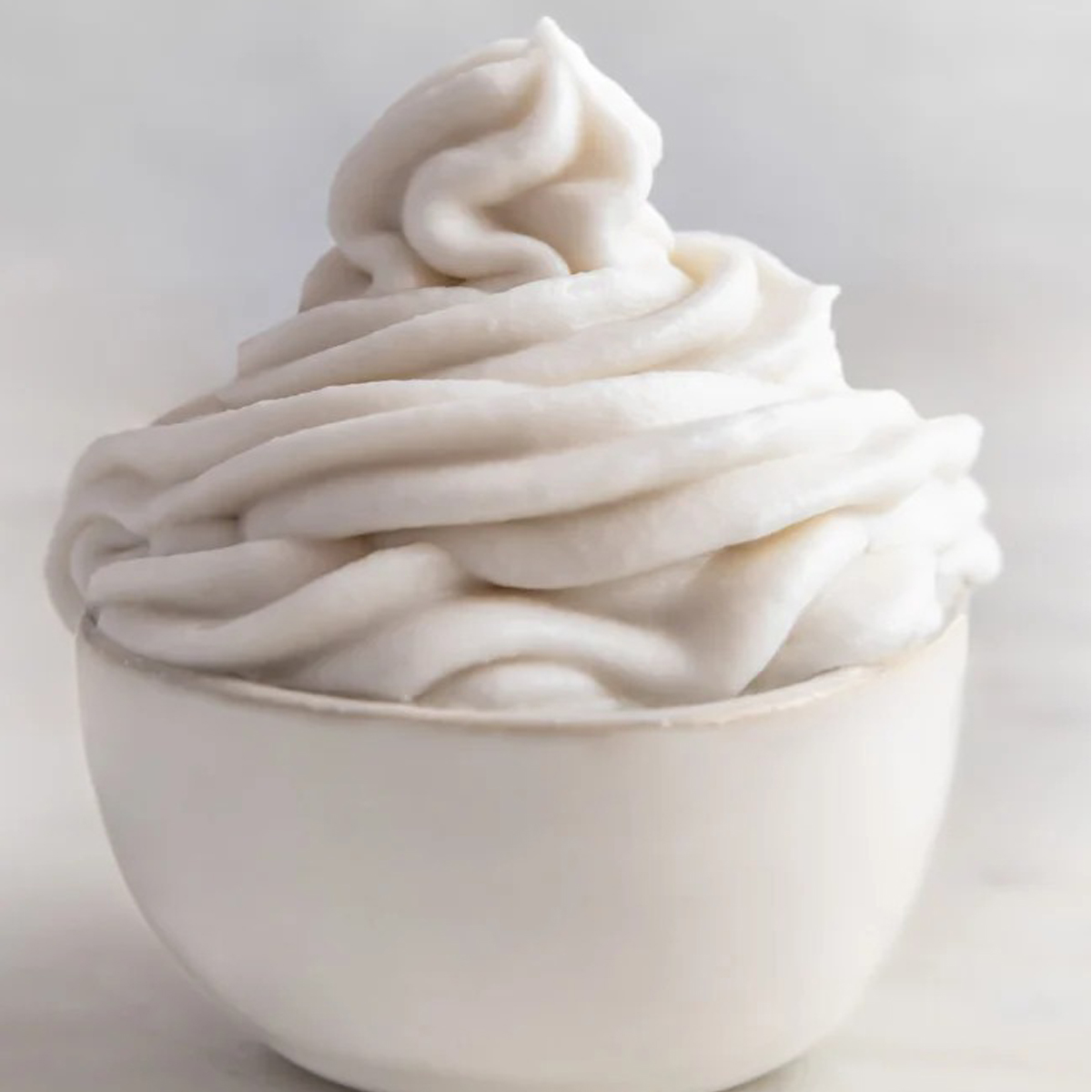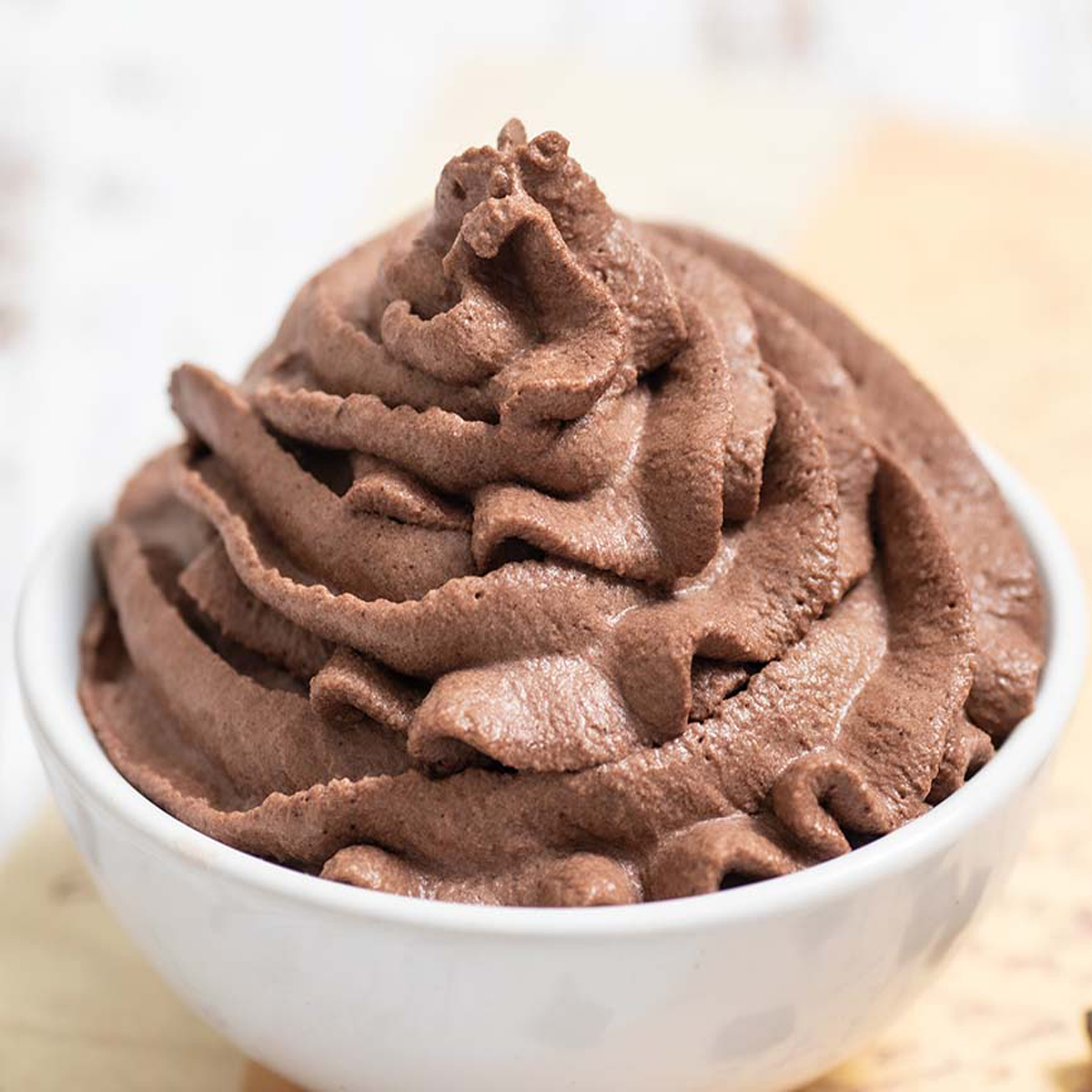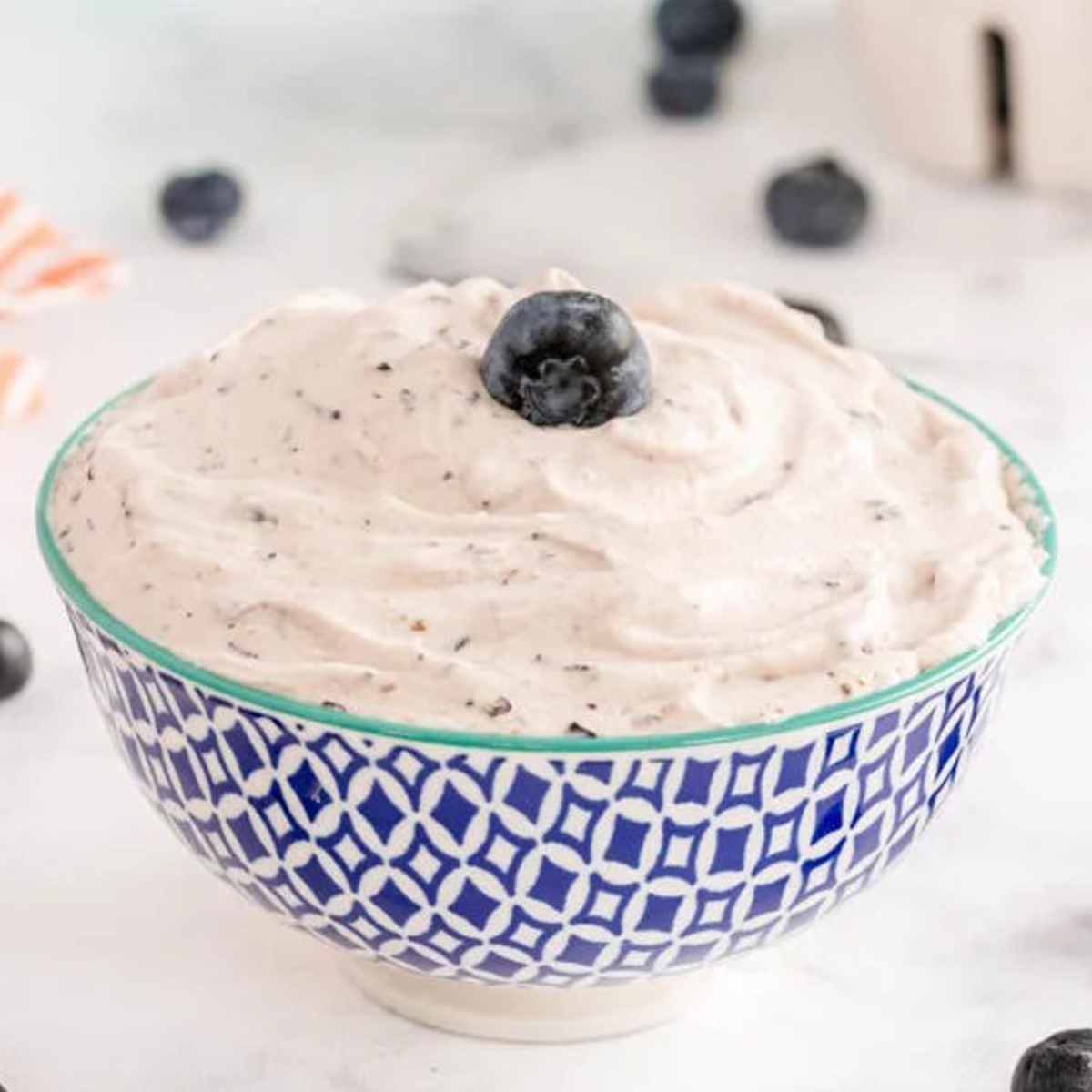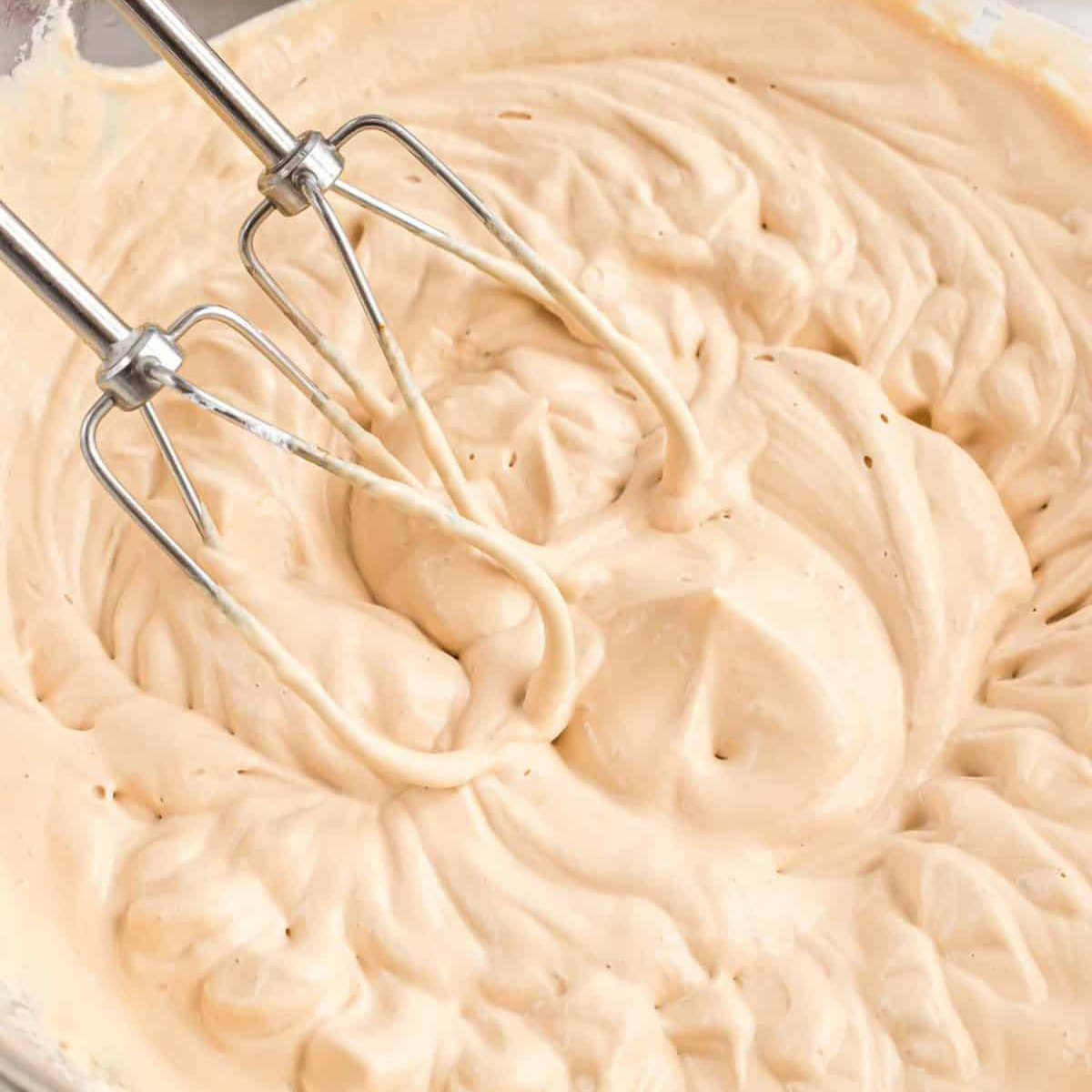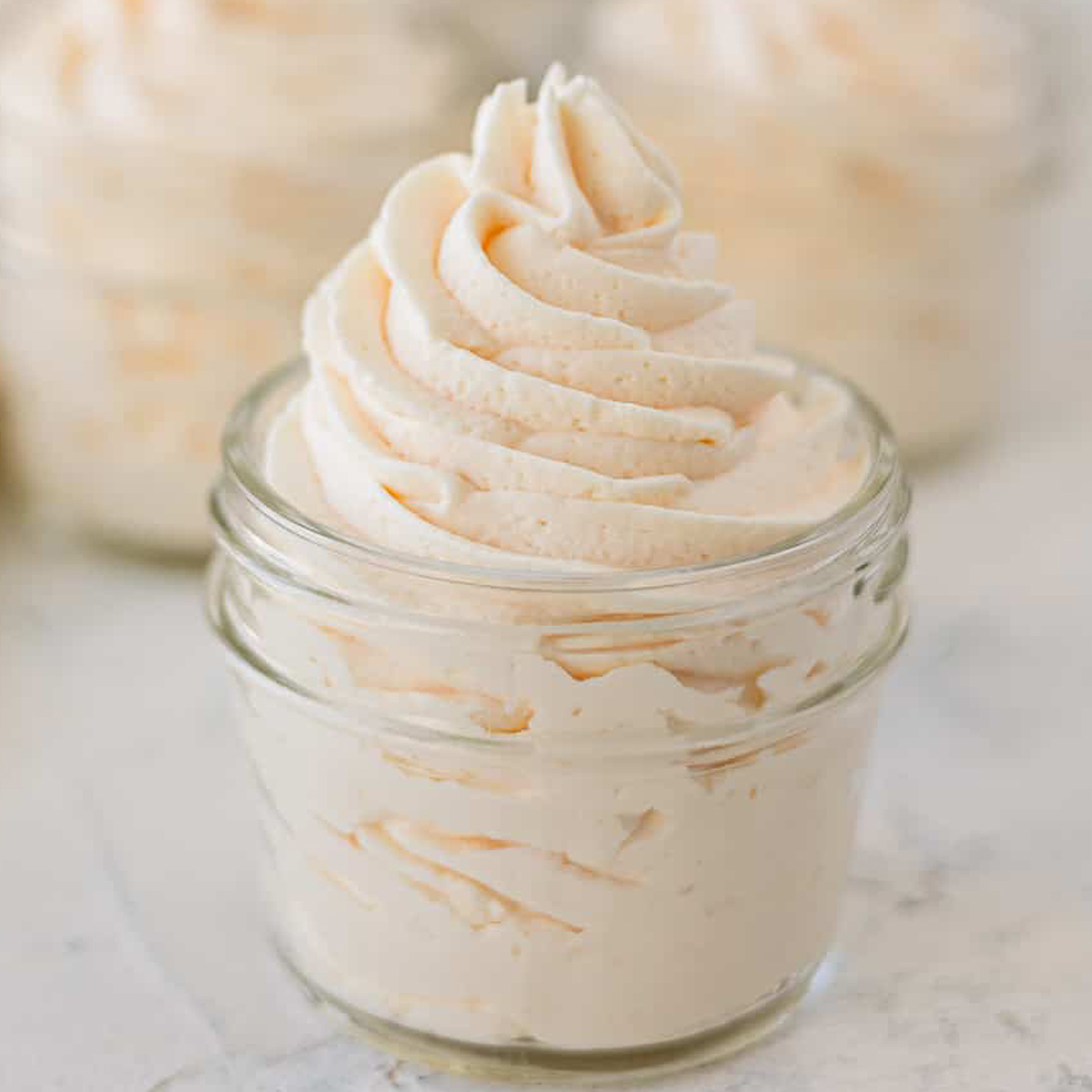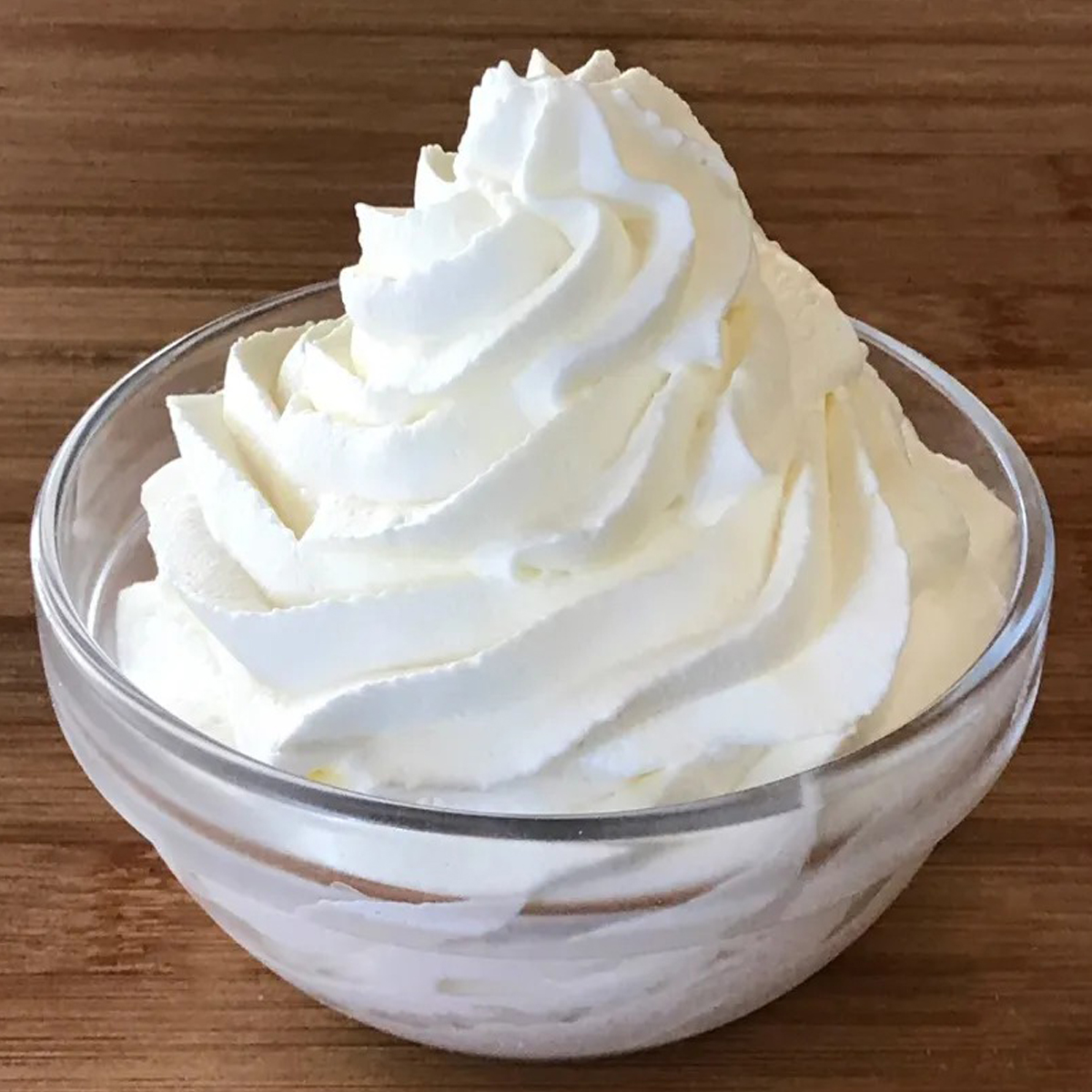Coconut Whipped Cream is a luscious and dairy-free alternative to traditional whipped cream, offering a delightful and tropical twist to a classic favorite. Made from the creamy goodness of coconut milk, this velvety topping adds a rich and indulgent texture to desserts, beverages, and more. Whether you’re catering to dietary restrictions or simply seeking a new flavor experience, Coconut Whipped Cream is a versatile and sumptuous addition that brings a touch of exotic sweetness to your culinary creations.

What is Coconut Whipped Cream?
Coconut Whipped Cream is a dairy-free and vegan-friendly alternative to traditional whipped cream. It’s made by chilling a can of full-fat coconut milk or coconut cream until the solids separate from the liquid. The solid coconut cream is then whipped until it becomes light and fluffy, similar to the texture of traditional whipped cream.
Coconut Whipped Cream offers a creamy and slightly sweet flavor with a hint of coconut, making it a versatile topping for a variety of desserts, beverages, and dishes. It can be used as a topping for cakes, pies, fruit salads, hot cocoa, coffee, and more. Its dairy-free nature makes it an excellent option for individuals who are lactose intolerant or following a vegan diet.
Coconut Whipped Cream is a popular choice among those seeking alternatives to dairy products while still enjoying a rich and satisfying dessert topping. It provides a tropical twist and adds a unique flavor profile to your favorite treats.

Why you will love Coconut Whipped Cream?
There are several reasons why you might fall in love with Coconut Whipped Cream:
- Dairy-Free Delight: If you’re lactose intolerant, have a dairy allergy, or follow a vegan diet, Coconut Whipped Cream provides a creamy and delicious alternative to traditional whipped cream.
- Tropical Flavor: The natural coconut flavor adds a delightful tropical twist to your desserts and beverages, infusing them with a unique and exotic taste.
- Versatile: Coconut Whipped Cream can be used in a wide range of dishes and beverages, from topping cakes and pies to enhancing your morning coffee or hot cocoa.
- Easy Preparation: Making Coconut Whipped Cream is simple and requires just a few ingredients. It’s a great option for a quick and impressive dessert topping.
- Customizable: You can adjust the sweetness and flavor of Coconut Whipped Cream by adding vanilla extract, sweeteners like maple syrup or powdered sugar, or even cocoa powder for a chocolatey variation.
- Healthier Option: Coconut cream contains healthy fats, and Coconut Whipped Cream is typically lower in saturated fats compared to dairy-based whipped creams. It also offers a dose of medium-chain triglycerides (MCTs), which are believed to have potential health benefits.
- Satisfying Texture: Coconut Whipped Cream retains a similar light and fluffy texture to traditional whipped cream, making it a luxurious and indulgent topping.
- Impressive Presentation: The unique appearance and natural aroma of Coconut Whipped Cream can elevate the visual appeal of your desserts, making them even more inviting.
- Creative Ingredient: Experiment with different variations by adding flavorings like citrus zest, extracts, or even a dash of spices to create personalized and memorable desserts.
- Allergy-Friendly: Coconut Whipped Cream is nut-free and soy-free, making it a versatile topping option for individuals with various dietary restrictions or allergies.
Whether you’re looking for a dairy-free alternative, seeking to infuse a touch of the tropics into your dishes, or simply want to try something new and delicious, Coconut Whipped Cream offers a range of benefits that can elevate your culinary creations and satisfy your taste buds.

Coconut Whipped Cream Recipe
Ingredients:
- 1 (14-ounce) can full-fat coconut milk or coconut cream, chilled overnight
- 2-3 tablespoons powdered sugar, or to taste
- 1 teaspoon vanilla extract (optional)
- Pinch of salt (optional)
Instructions:
- Chill the Coconut Milk or Cream:
- Place the can of coconut milk or coconut cream in the refrigerator overnight. This helps separate the thick coconut cream from the liquid.
- Prep Your Tools:
- Place a mixing bowl and beaters or whisk attachment in the refrigerator for about 15 minutes before making the whipped cream. Cold utensils will help the cream whip better.
- Separate the Cream:
- Carefully open the chilled can of coconut milk or cream without shaking it. Scoop out the thick coconut cream that has risen to the top. Save the liquid (coconut water) for other uses like smoothies or cooking.
- Whip the Coconut Cream:
- Transfer the coconut cream to the chilled mixing bowl.
- Using a hand mixer or stand mixer fitted with the whisk attachment, start whipping the coconut cream on low speed for about 1 minute, then gradually increase the speed to medium-high.
- Add Sweetener and Flavorings:
- Once the cream starts to thicken, add 2-3 tablespoons of powdered sugar, adjusting to your desired level of sweetness.
- If desired, add vanilla extract and a pinch of salt for flavor enhancement. Mix until well combined.
- Achieve Desired Consistency:
- Continue whipping until the coconut cream reaches a light and fluffy texture, similar to traditional whipped cream. This can take 2-4 minutes, depending on your equipment and the thickness of the coconut cream.
- Taste and Adjust:
- Taste the Coconut Whipped Cream and adjust the sweetness or flavorings if needed. Keep in mind that the flavors will meld together even more after chilling.
- Serve or Store:
- Use the Coconut Whipped Cream immediately as a topping for desserts, beverages, or fruits.
- If not using right away, store the Coconut Whipped Cream in an airtight container in the refrigerator. It will thicken slightly as it chills.
- Re-Whipping:
- If the whipped cream becomes slightly solid after refrigeration, allow it to sit at room temperature for a few minutes, then gently re-whip using a whisk or mixer until it regains its fluffy texture.
- Enjoy!
- Dollop or pipe the Coconut Whipped Cream onto your favorite treats, and savor the creamy, coconutty goodness.
Remember that the composition and quantities provided are approximate guidelines. You can adjust the level of sweetness, flavorings, and consistency to match your preferences. Coconut Whipped Cream is a versatile and delightful topping that can add a touch of tropical flair to your culinary creations.

How to serve Coconut Whipped Cream
Serving Coconut Whipped Cream is a delightful way to add a creamy, dairy-free touch to a wide variety of dishes and beverages. Here are some creative and delicious ways to enjoy and serve Coconut Whipped Cream:
1. Dessert Topping:
- Dollop Coconut Whipped Cream on pies, tarts, and cakes to add a luscious and tropical twist to your favorite desserts.
2. Fruit Salad:
- Top a bowl of fresh fruit salad with Coconut Whipped Cream for a refreshing and flavorful contrast.
3. Hot Beverages:
- Float a generous spoonful of Coconut Whipped Cream on top of hot cocoa, coffee, or chai tea for a creamy and aromatic experience.
4. Cold Beverages:
- Swirl Coconut Whipped Cream into iced coffee, iced tea, or smoothies to enhance the taste and texture.
5. Pancakes and Waffles:
- Serve Coconut Whipped Cream alongside pancakes, waffles, or crepes as a dairy-free alternative to traditional whipped cream.
6. Parfaits and Dessert Cups:
- Layer Coconut Whipped Cream with fruits, granola, and other toppings to create elegant and delicious parfaits.
7. Puddings and Custards:
- Top puddings, custards, or rice puddings with Coconut Whipped Cream for a creamy and tropical touch.
8. Mousse:
- Use Coconut Whipped Cream as a topping for chocolate mousse or other creamy desserts.
9. Pie Bars and Squares:
- Add a dollop of Coconut Whipped Cream to individual servings of pie bars, squares, or dessert shooters.
10. Overnight Oats: – Spoon Coconut Whipped Cream onto your morning bowl of overnight oats for added flavor and creaminess.
11. Milkshakes: – Blend Coconut Whipped Cream into milkshakes for a velvety texture and coconut flavor.
12. French Toast: – Serve Coconut Whipped Cream alongside slices of French toast for a decadent breakfast treat.
13. Dips: – Use Coconut Whipped Cream as a dip for fresh fruit, cookies, or even graham crackers.
14. No-Bake Treats: – Incorporate Coconut Whipped Cream into no-bake desserts like trifles, icebox cakes, or layered dessert cups.
15. Garnish: – Use a piping bag to create decorative swirls or peaks of Coconut Whipped Cream on desserts to enhance their visual appeal.
Remember that Coconut Whipped Cream has a delicate coconut flavor that pairs well with a variety of dishes. Its light and airy texture can elevate the overall enjoyment of your culinary creations. Feel free to get creative and explore new ways to serve Coconut Whipped Cream based on your preferences and the dishes you love.

| How to store Coconut Whipped Cream |
Proper storage is essential to maintain the quality and freshness of Coconut Whipped Cream. Here’s how to store it:
Short-Term Storage (1-2 Days):
If you plan to use Coconut Whipped Cream within a day or two, you can store it in the refrigerator. Follow these steps:
- Transfer to an Airtight Container: Place the Coconut Whipped Cream in an airtight container. Glass or plastic containers with a secure lid work well.
- Label and Date: Label the container with the date of preparation. This will help you keep track of its freshness.
- Refrigerate: Store the container in the refrigerator. Keep in mind that the texture of Coconut Whipped Cream may slightly change upon refrigeration, but it can be easily re-whipped before using.
- Avoid Odor Absorption: Coconut Whipped Cream can absorb odors from other foods in the refrigerator, so it’s best to keep it in a sealed container.
Longer-Term Storage (3-5 Days):
For longer storage, you can freeze Coconut Whipped Cream. Follow these guidelines:
- Divide into Portions: Portion the Coconut Whipped Cream into individual servings or use an ice cube tray for smaller portions.
- Freeze: Place the portions on a parchment-lined baking sheet and freeze until solid. Once frozen, transfer the portions to an airtight container or freezer-safe bag.
- Label and Date: Label the container or bag with the date of freezing.
- Thaw and Re-Whip: When you’re ready to use the frozen Coconut Whipped Cream, transfer the desired portions to the refrigerator to thaw slowly. Once thawed, gently re-whip the cream to restore its fluffy texture.
Re-Whipping:
Coconut Whipped Cream may firm up slightly after refrigeration or freezing. To restore its light and fluffy texture, use a whisk or a mixer to re-whip the cream before using. This step is especially important after freezing.
Note: Over time, Coconut Whipped Cream may separate slightly or develop ice crystals when frozen. Re-whipping should help improve the texture, but keep in mind that the consistency may not be exactly the same as freshly made cream.
Remember that Coconut Whipped Cream is best enjoyed fresh, so it’s a good practice to make smaller batches as needed. Proper storage and re-whipping will help maintain its quality and make it a delightful dairy-free topping for your favorite treats.
Other Delicious Dessert Recipes To Try
Tips to make perfect Coconut Whipped Cream
Creating the perfect Coconut Whipped Cream involves a few tips and tricks to ensure a smooth, fluffy, and delicious result. Here are some tips to help you make the best Coconut Whipped Cream:
1. Choose the Right Coconut Milk/Cream:
- Opt for full-fat coconut milk or coconut cream for the best results. Look for brands that separate into a thick cream layer and liquid when chilled.
2. Chill Your Equipment:
- Chill the mixing bowl and beaters (or whisk attachment) in the refrigerator for about 15-20 minutes before whipping. Cold equipment helps the cream whip better.
3. Proper Chilling Time:
- Chill the can of coconut milk or cream in the refrigerator for at least 8 hours or overnight. This allows the cream to separate from the liquid.
4. Select the Right Part of the Coconut Cream:
- Scoop out only the thick, solid coconut cream from the chilled can. Leave any remaining liquid behind.
5. Sweetener and Flavorings:
- Add powdered sugar and vanilla extract (if desired) gradually, tasting as you go. Adjust the sweetness and flavor to your preference.
6. Whip Gradually:
- Start whipping the coconut cream on low speed and gradually increase to medium-high. This helps prevent splattering and allows the cream to incorporate air evenly.
7. Be Patient:
- Whipping coconut cream may take a bit longer than dairy-based whipped cream. Be patient and avoid overmixing.
8. Texture Check:
- Stop whipping once the Coconut Whipped Cream has reached a light and fluffy consistency, similar to traditional whipped cream. Overwhipping can lead to a grainy texture.
9. Re-Whipping After Chilling:
- After refrigeration, Coconut Whipped Cream may firm up. Gently re-whip with a whisk or mixer to restore its texture before using.
10. Avoid Over-Mixing:
- Overmixing can cause the Coconut Whipped Cream to become too dense. Mix just until the desired consistency is achieved.
11. Use Immediately or Store Properly:
- Use the Coconut Whipped Cream immediately as a topping or store it in the refrigerator or freezer using proper storage techniques.
12. Use Fresh:
- Coconut Whipped Cream is best enjoyed fresh. While it can be stored, the texture and flavor may change over time.
13. Experiment with Additions:
- Get creative by adding natural flavorings like cocoa powder, citrus zest, or spices to create unique variations.
14. Mind the Weather:
- High humidity can affect the texture of Coconut Whipped Cream. If it’s particularly humid, you may need to adjust the whipping process.
15. Have Patience:
- Making Coconut Whipped Cream might require some practice. Don’t be discouraged if your first attempt isn’t perfect; with practice, you’ll refine your technique and achieve the desired results.
By following these tips and adjusting your technique based on your preferences and the specific coconut milk or cream you’re using, you’ll be well on your way to creating a perfect batch of Coconut Whipped Cream for a delightful dairy-free topping.

FAQ’s about Coconut Whipped Cream
Certainly! Here are some frequently asked questions (FAQs) and troubleshooting tips for Coconut Whipped Cream:
1. Why isn’t my Coconut Whipped Cream thickening?
- If your Coconut Whipped Cream isn’t thickening, it could be due to using coconut milk with low fat content or not chilling the can of coconut milk/cream long enough. Make sure you’re using full-fat coconut milk or cream and that it has been chilled for the recommended time.
2. My Coconut Whipped Cream is too runny. What should I do?
- If your Coconut Whipped Cream is too runny, it might be due to using coconut milk with too much liquid or not whipping it enough. Drain any excess liquid from the can before whipping, and try re-whipping the cream for a longer duration to achieve a thicker consistency.
3. Can I use sweetened coconut cream/milk for the whipped cream?
- It’s recommended to use unsweetened coconut milk or cream and add your preferred sweetener gradually. Using sweetened coconut products can lead to an overly sweet whipped cream.
4. Why does my Coconut Whipped Cream have a grainy texture?
- A grainy texture can result from overwhipping the coconut cream or using a brand of coconut milk that doesn’t separate well. Start with a high-quality coconut milk or cream and avoid overmixing.
5. How can I make my Coconut Whipped Cream sweeter?
- Gradually add powdered sugar to the coconut cream while whipping, tasting as you go. You can also add natural sweeteners like maple syrup or agave nectar.
6. Can I flavor my Coconut Whipped Cream?
- Yes! You can add vanilla extract, cocoa powder, citrus zest, or other flavorings to customize the taste of your Coconut Whipped Cream.
7. My Coconut Whipped Cream is too stiff. How can I fix it?
- If your Coconut Whipped Cream is too stiff, you can gently fold in a small amount of unsweetened coconut milk to soften it. Be careful not to overmix.
8. Can I use a hand whisk instead of an electric mixer?
- Yes, you can use a hand whisk to whip the coconut cream, but it might require more effort and time compared to using an electric mixer. Make sure to chill your whisk and bowl beforehand.
9. Can I make Coconut Whipped Cream ahead of time?
- Yes, you can make Coconut Whipped Cream ahead of time and store it in the refrigerator. Just keep in mind that it might firm up a bit, so re-whip it before using.
10. Can I freeze Coconut Whipped Cream? – Yes, you can freeze Coconut Whipped Cream for longer storage. Freeze it in portions and thaw in the refrigerator before re-whipping and using.
11. Can I use canned coconut cream instead of coconut milk? – Yes, you can use canned coconut cream for Coconut Whipped Cream. The process is similar to using coconut milk, but coconut cream often has a higher fat content, resulting in a creamier whipped texture.
Remember that Coconut Whipped Cream can be a bit finicky, and results may vary based on the brand of coconut milk or cream you use. It might take a few tries to achieve your desired consistency and flavor, so don’t be discouraged if your first attempt isn’t perfect. Experiment, adjust, and enjoy the deliciousness of this dairy-free alternative!
Nutrition information
Here’s an approximate nutrition information for Coconut Whipped Cream per serving (assuming the recipe yields about 16 servings):
Please note that these values are estimates and can vary based on factors such as serving size, ingredient brands, and variations in the recipe. It’s always a good idea to use a nutrition calculator for precise information, especially if you have specific dietary concerns.
- Calories: Around 50-60 calories per serving
- Total Fat: Approximately 5-6g
- Saturated Fat: Approximately 5g
- Cholesterol: 0mg
- Sodium: 2-5mg (if unsalted)
- Total Carbohydrates: Approximately 1-2g
- Dietary Fiber: 0g
- Sugars: Less than 1g
- Protein: Less than 1g
Keep in mind that Coconut Whipped Cream is usually consumed in small quantities, so the nutritional impact per serving is relatively low. It provides a source of healthy fats from the coconut, making it a suitable option for those looking for dairy-free alternatives or incorporating more plant-based options into their diet.

